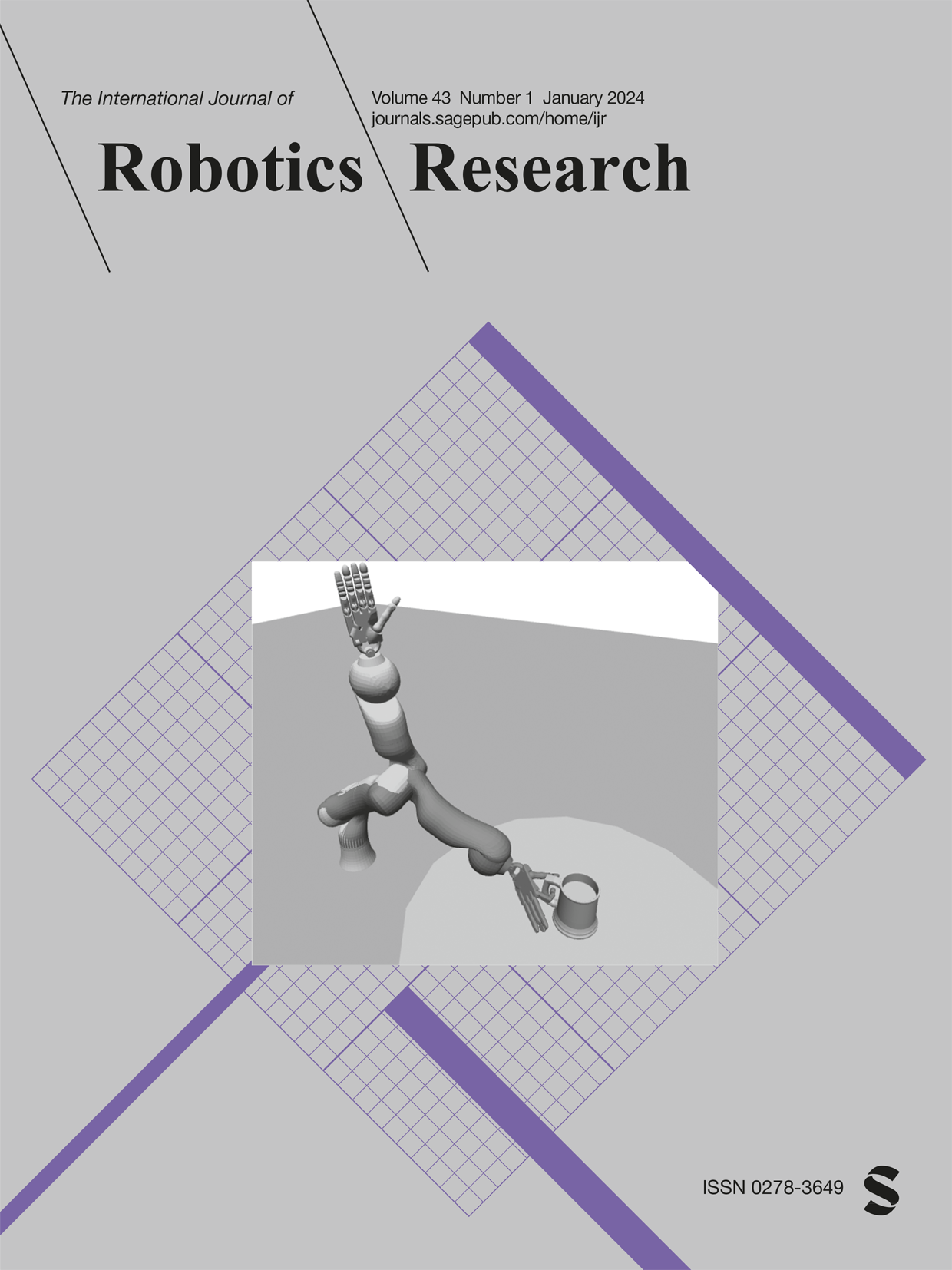用于主动机器人的BenchBot环境(BEAR):用于主动场景理解研究的模拟数据
IF 5
1区 计算机科学
Q1 ROBOTICS
引用次数: 3
摘要
我们提供了一个促进主动场景理解研究的平台,由高保真度模拟环境和一个简单而强大的API组成,该API在模拟和现实中控制移动机器人。与专注于场景理解的感知方面的静态、预先记录的数据集相比,代理是我们工作中的首要任务。我们提供三个级别的机器人代理,允许用户以不同的难度和逼真度控制机器人。虽然最基本的层面提供了预定义的轨迹和地面实况定位,但更现实的层面允许我们评估包括感知、导航、探索和SLAM在内的综合行为。与现有的模拟环境相比,我们专注于使用我们的环境接口(BenchBot)进行稳健的场景理解研究,该接口为模拟环境和真实机器人平台之间的无缝过渡提供了简单的API。我们相信,这种脚手架设计是一种有效的方法,可以在没有任何机构的情况下弥合经典静态数据集与现实中机器人评估的独特挑战之间的差距。我们的主动机器人BenchBot环境(BEAR)包括25个昼夜照明条件下的室内环境,总共1443个待识别和映射的对象,以及用于评估的地面实况3D边界框。BEAR网站:https://qcr.github.io/dataset/benchbot-bear-data/.本文章由计算机程序翻译,如有差异,请以英文原文为准。
BenchBot environments for active robotics (BEAR): Simulated data for active scene understanding research
We present a platform to foster research in active scene understanding, consisting of high-fidelity simulated environments and a simple yet powerful API that controls a mobile robot in simulation and reality. In contrast to static, pre-recorded datasets that focus on the perception aspect of scene understanding, agency is a top priority in our work. We provide three levels of robot agency, allowing users to control a robot at varying levels of difficulty and realism. While the most basic level provides pre-defined trajectories and ground-truth localisation, the more realistic levels allow us to evaluate integrated behaviours comprising perception, navigation, exploration and SLAM. In contrast to existing simulation environments, we focus on robust scene understanding research using our environment interface (BenchBot) that provides a simple API for seamless transition between the simulated environments and real robotic platforms. We believe this scaffolded design is an effective approach to bridge the gap between classical static datasets without any agency and the unique challenges of robotic evaluation in reality. Our BenchBot Environments for Active Robotics (BEAR) consist of 25 indoor environments under day and night lighting conditions, a total of 1443 objects to be identified and mapped, and ground-truth 3D bounding boxes for use in evaluation. BEAR website: https://qcr.github.io/dataset/benchbot-bear-data/.
求助全文
通过发布文献求助,成功后即可免费获取论文全文。
去求助
来源期刊
CiteScore
22.20
自引率
0.00%
发文量
34
审稿时长
6-12 weeks
期刊介绍:
The International Journal of Robotics Research (IJRR) has been a leading peer-reviewed publication in the field for over two decades. It holds the distinction of being the first scholarly journal dedicated to robotics research.
IJRR presents cutting-edge and thought-provoking original research papers, articles, and reviews that delve into groundbreaking trends, technical advancements, and theoretical developments in robotics. Renowned scholars and practitioners contribute to its content, offering their expertise and insights. This journal covers a wide range of topics, going beyond narrow technical advancements to encompass various aspects of robotics.
The primary aim of IJRR is to publish work that has lasting value for the scientific and technological advancement of the field. Only original, robust, and practical research that can serve as a foundation for further progress is considered for publication. The focus is on producing content that will remain valuable and relevant over time.
In summary, IJRR stands as a prestigious publication that drives innovation and knowledge in robotics research.

 求助内容:
求助内容: 应助结果提醒方式:
应助结果提醒方式:


